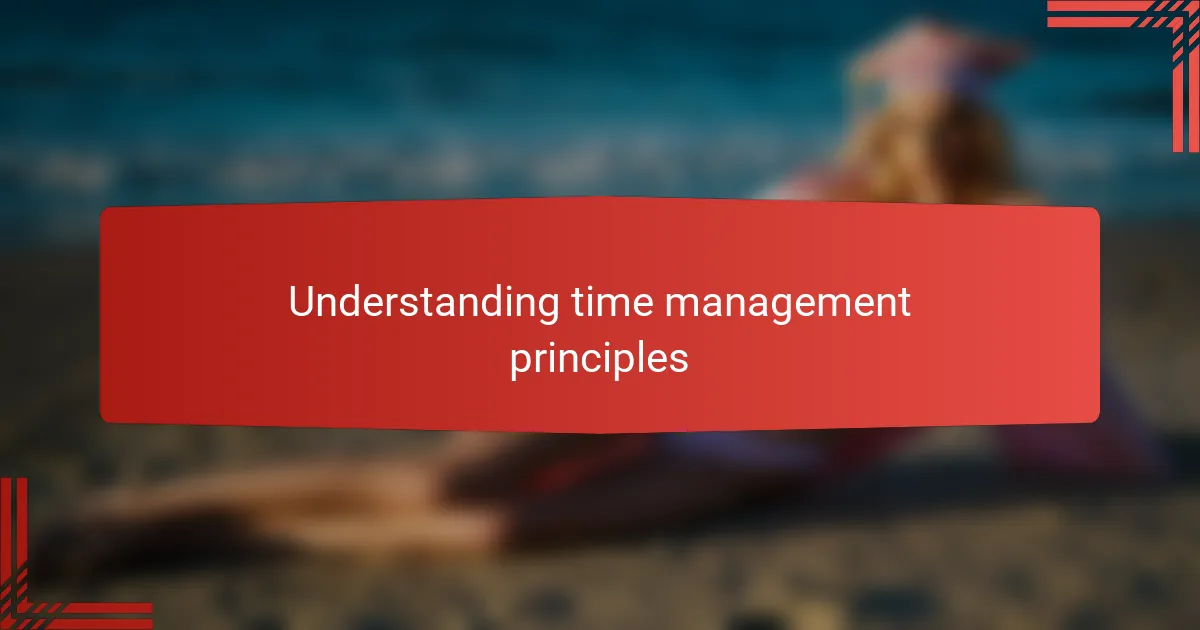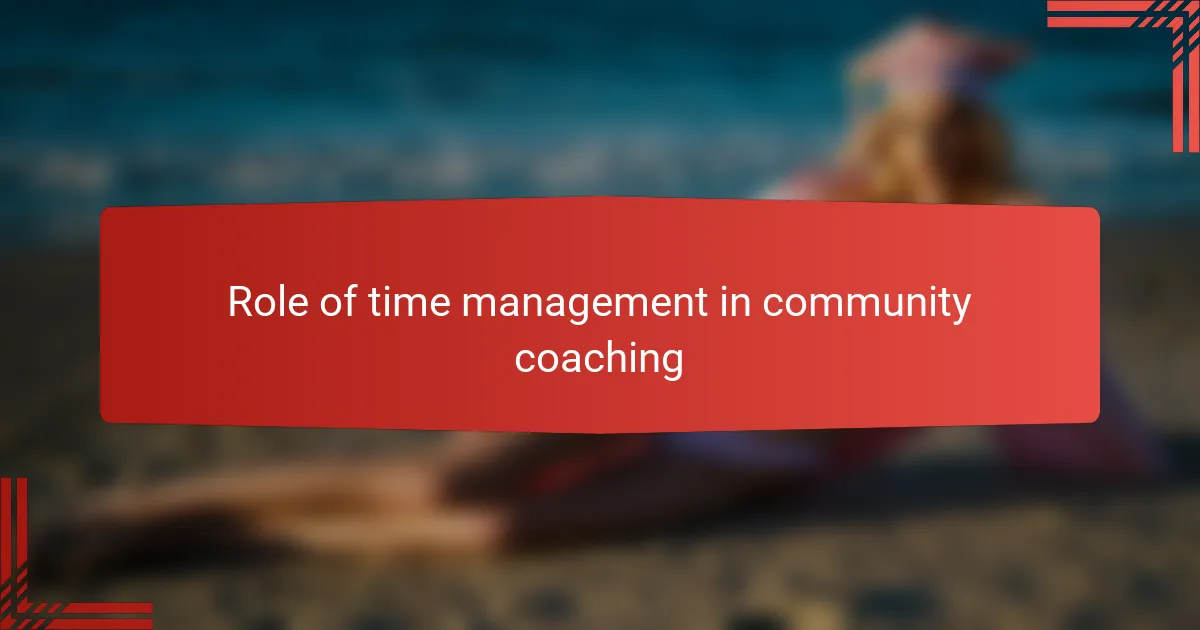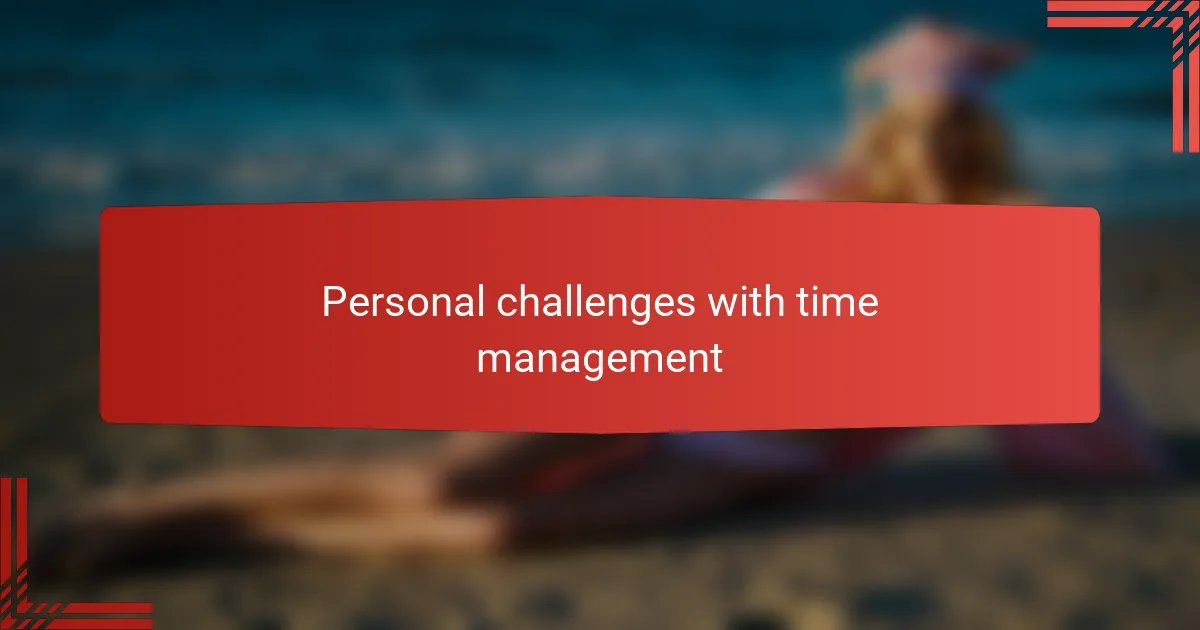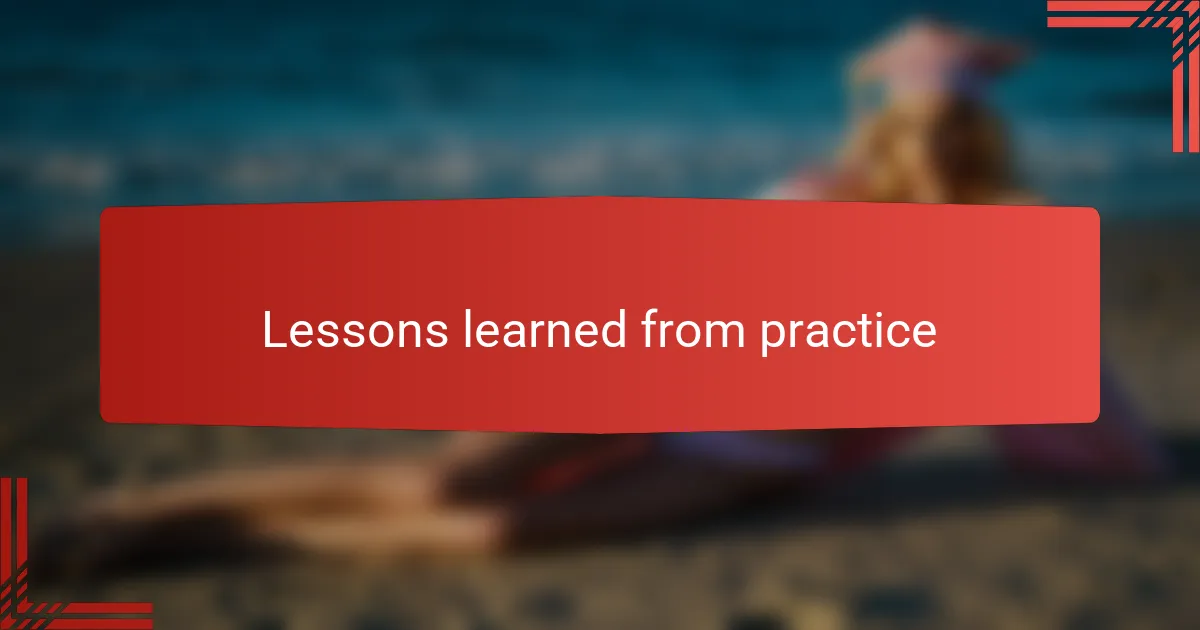Key takeaways
- Time management is about aligning tasks with personal values and long-term goals, focusing on “important but not urgent” activities to foster creativity and growth.
- Stephen Covey’s “Four Quadrants” method helps prioritize tasks by urgency and importance, and emphasizes the significance of focusing on one’s “Circle of Influence” over the “Circle of Concern.”
- Consistent self-reflection is crucial for effective time management, allowing for course corrections and maintaining focus on meaningful work while adapting to life’s unexpected demands.
- Setting clear daily priorities and learning to say no to nonessential tasks significantly enhances time management effectiveness, fostering a sense of control and fulfillment.

Understanding time management principles
Time management, as Stephen Covey taught me, isn’t just about scheduling tasks—it’s about aligning those tasks with what truly matters. Have you ever felt overwhelmed by a to-do list that never seems to end? I have, and that’s when I realized prioritizing based on values rather than urgency changes everything.
One principle that stuck with me is focusing on what Covey calls “important but not urgent” activities. At first, it sounds counterintuitive—why invest time in things that aren’t screaming for attention? But practicing this helped me prevent crises before they happened and freed up mental space for creativity and growth.
Thinking deeply about these principles made me question how I had been spending my time all along. Am I living reactively, responding only to what demands me most? Or am I proactively managing my life in a way that reflects my goals and commitments? Understanding this shift is what transformed my approach to time, and it can do the same for anyone.

Overview of Stephen Covey’s methods
Stephen Covey’s time management methods revolve around what he calls the “Four Quadrants,” a simple yet powerful tool that classifies tasks by urgency and importance. When I first applied this framework, it was like turning on a light in a cluttered room—I saw clearly which activities drained my energy and which truly propelled me forward. Have you ever felt trapped in endless busywork? Covey’s approach helped me break free from that cycle.
Another key aspect of his method is the emphasis on “Circle of Influence” versus “Circle of Concern.” This concept made me reflect on where I was putting my attention—worrying about things beyond my control or focusing on what I could actually change. That mindset shift didn’t just improve how I managed time; it reduced stress and boosted my sense of agency.
What resonated most deeply with me was Covey’s insistence on aligning daily actions with personal values and long-term goals. It’s easy to get caught up in urgency and lose sight of meaning, but his methods encouraged me to ask, “Does this task bring me closer to who I want to be?” That question changed how I prioritized and ultimately, how I experienced my days.

Role of time management in community coaching
Time management plays a crucial role in community coaching because it shapes the way coaches support and empower others. I remember feeling stretched thin before I applied Covey’s principles; suddenly, I could give more focused attention to each person, making our interactions more meaningful.
Have you ever wondered how much of your coaching time slips away in distractions or reactive tasks? For me, recognizing which activities truly moved community goals forward was a game changer. It wasn’t about doing more but doing what mattered most.
Moreover, managing time effectively helps build trust within the community. When you consistently show up organized and purposeful, people sense your commitment and feel safer to engage deeply. That ripple effect is something I’ve witnessed firsthand, and it’s powerful.

Applying Covey’s techniques in daily routines
Applying Covey’s techniques to my daily routine meant becoming intentional about each hour. I started by blocking time for those “important but not urgent” tasks, like planning and relationship building, even when the day felt packed. It wasn’t easy at first to say no to distractions, but I noticed a calmer rhythm taking hold.
Have you ever tried journaling your tasks through Covey’s Four Quadrants? I did, and it was revealing. Seeing where I wasted energy helped me shift my habits—I stopped reacting to every beep and instead focused on what genuinely aligned with my values. That small change made my days feel less frantic and more purposeful.
One habit I found crucial was reviewing my priorities every morning. This simple act grounded me, reminding me to steer towards long-term goals rather than just responding to what screamed for attention. Over time, this daily pause fostered a sense of control and fulfillment that I hadn’t realized was missing before.

Personal challenges with time management
Time management has never come naturally to me—I used to underestimate how easily distractions could hijack my day. Have you ever planned to focus on something important only to find hours lost scrolling or replying to emails? That frustration made me realize how often I let the urgent drown out what truly mattered.
One personal challenge was saying no to things that felt pressing but didn’t align with my priorities. I remember a week packed with meetings that left me drained and disconnected from my goals. Learning to recognize and resist those demands was uncomfortable at first, yet necessary for reclaiming my time.
Sometimes, despite my best efforts, old habits crept back in. I’d catch myself slipping into reactive mode, struggling to maintain the balance Covey’s methods taught me. But each setback became a learning moment, reminding me that time management is less about perfection and more about persistence.

Lessons learned from practice
What truly hit me after practicing Covey’s time management was the power of consistent reflection. How often do we pause to ask ourselves if our actions yesterday moved us closer to our goals? I found that this regular check-in helped me course-correct before weeks got away from me.
Another lesson was about patience. At first, I expected immediate results, but change didn’t come overnight. Instead, little victories—like saying no to distractions or carving out time for meaningful work—built up gradually. That slow momentum transformed how I approach each day.
Interestingly, I also learned that flexibility is key. Life throws curveballs, and rigid schedules can become sources of stress. So, I embraced adaptability within Covey’s framework, allowing me to stay grounded in my priorities while navigating unexpected demands. Have you experienced that balance between structure and flow? It’s where real growth happens.

Tips for improving time management skills
One tip that really changed the game for me was setting clear priorities each morning, using Covey’s “urgent vs. important” lens. Instead of diving headfirst into whatever screamed loudest, I asked myself: “What move today will create the biggest impact?” That shift brought so much clarity and calm—no more scattered energy chasing every distraction.
Another thing I learned was the power of saying no. It sounds simple, but turning down tasks that didn’t align with my core goals felt like reclaiming pieces of my day. I remember a week when I let go of several nonessential meetings and suddenly had space to focus on meaningful projects. It was liberating and reminded me how important boundaries are for good time management.
Finally, I found that regularly reflecting on how my time was spent helped me grow. Sometimes I caught myself stuck in the “urgent but not important” quadrant, frantically reacting instead of acting with intention. By pausing, even for a few minutes, to review my day’s tasks, I could course-correct before exhaustion set in. Have you tried that? I promise it’s worth the tiny investment of time.